Sketchnotes from Congreso Anglo 2024
I feel so honoured to have been invited to present at the Anglo Conference in Montevideo. It is a city that is close to my heart, as my husband and I visited in 2005 on our first adventure to Latin America. I am delighted to say that the Choripan at Mercado del Puerto is just as delicious as it was 20 years ago!
I was representing Nile and the focus of my session was accessible learning. I shared my experiences of teaching mixed ability classes and simple ways teachers can tweak their lessons to support learners and challenge fast finishers. You can see a sneak peek by clicking the image below:
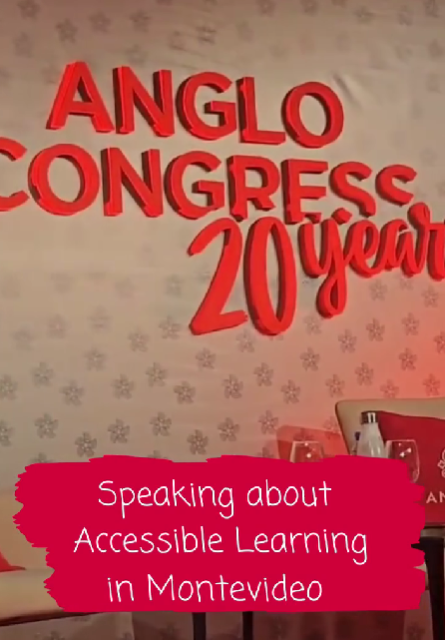
The congress had sessions from ELT legends such as Jeremy Harmer, Susan Hillyard, Claudia Rey and Ben Goldstein. Each of their sessions was delivered with expertise and enthusiasm. The room was buzzing.
And, of course, I took some sketchnotes. I really enjoy getting my coloured pens out and the challenge of summarising my notes to A5 size. I don’t NEED to squash everything in to this size – I could also use A4 and not limit myself this way, but I like the cleanness of it, and it forces me to focus on key takeaways.
One of the things I love most about sketchnoting, is showing the presenters at the end of the session. Here’s an image someone captured of me sharing my creation with Susan Hillyard and Claudia Rey. I love their expressions of delight:
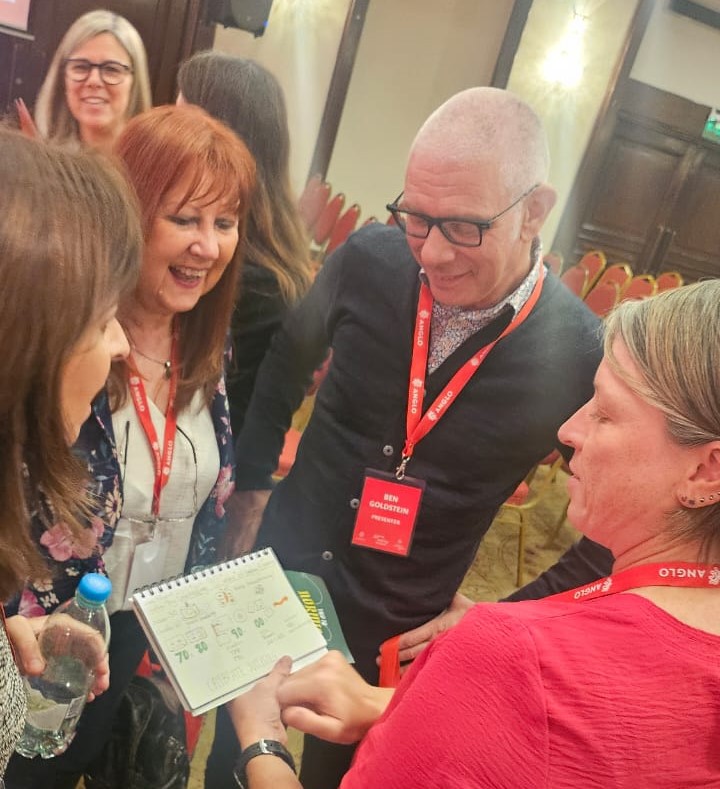
If you’re familiar with my sketchnotes, you’ll notice they use the same icons again and again. These icons make up my ‘visual vocabulary’, or images I can draw as if I was simply writing a word! I started developing this visual vocabulary just a few years ago. It’s as easy as learning any other language! It just takes time an practice. To get started, download my free sketchnoting guide here.
Here are my visual summaries from the conference. For more detail, you can read my blog post for Ellii:
Ben Goldstein – Where do I fit in now?
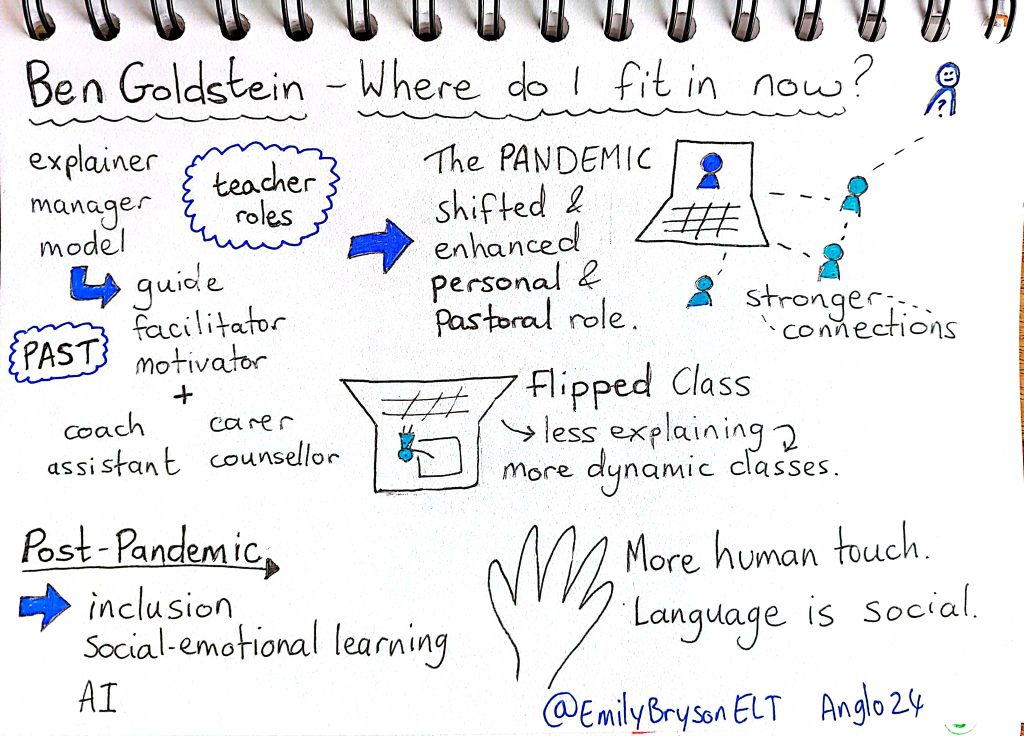
Susan Hillyard and Claudia Rey – Celebrating 90 years of teaching and learning
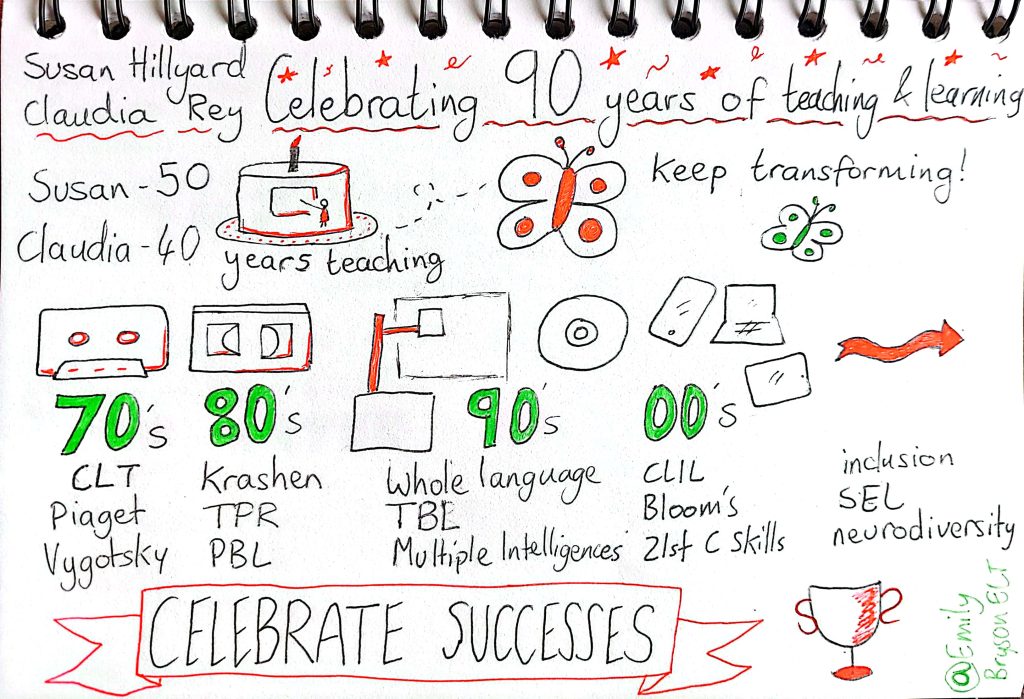
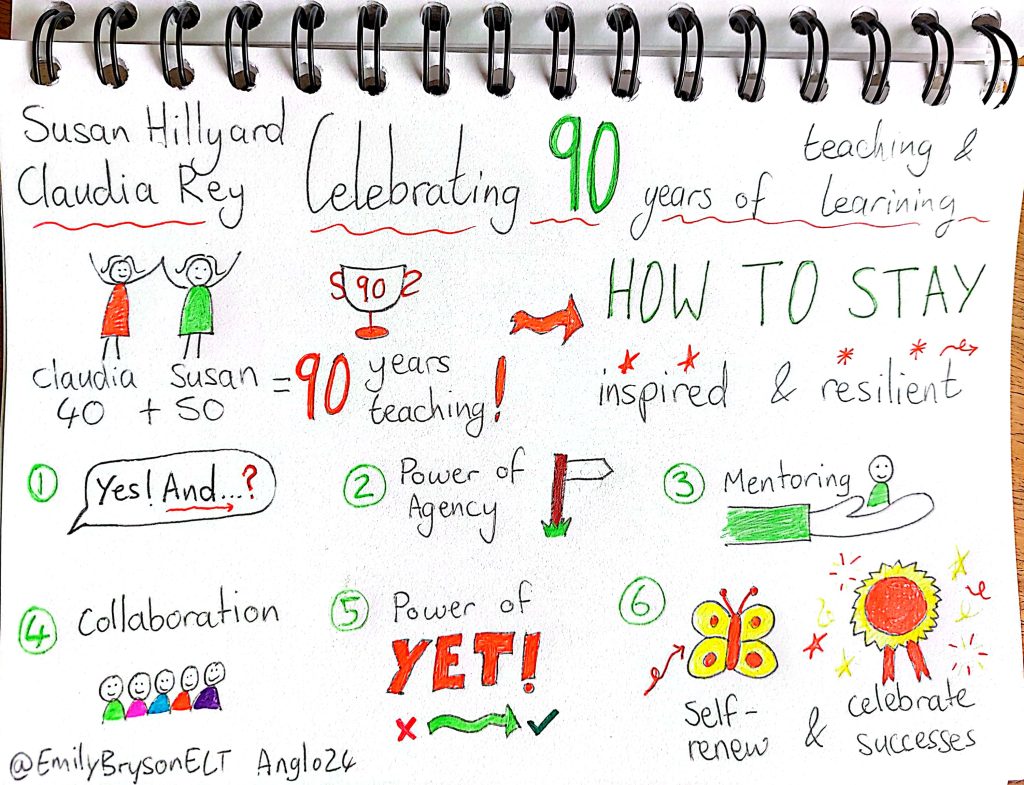
Ines Stefani – Reading is breathing IN, Writing is breathing OUT.
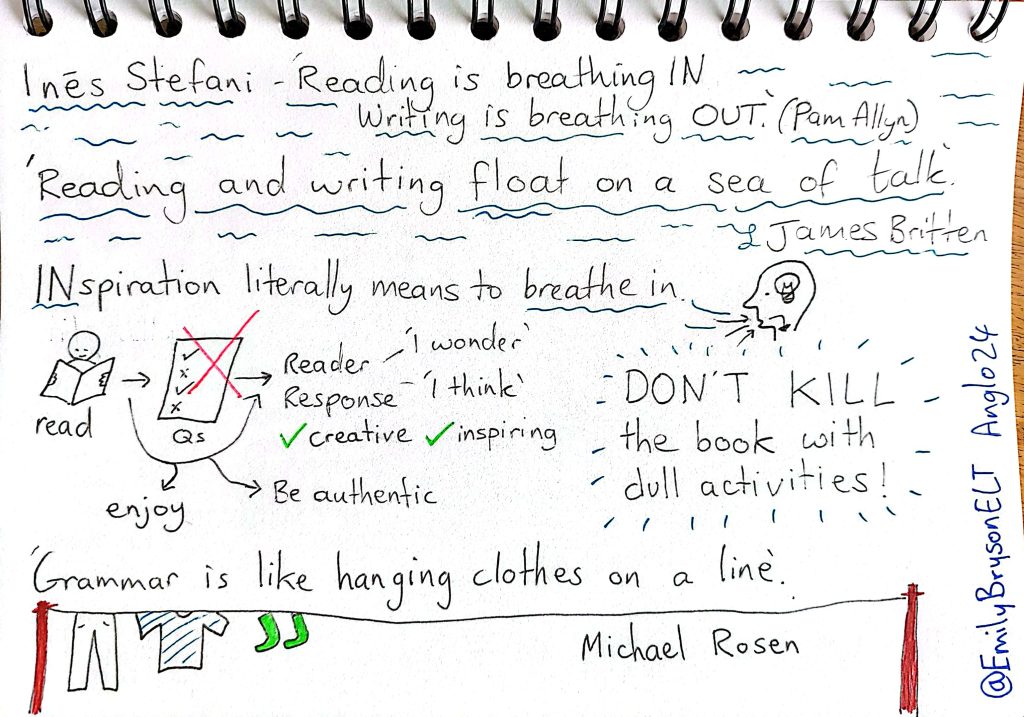
Jeremy Harmer – When we sing together
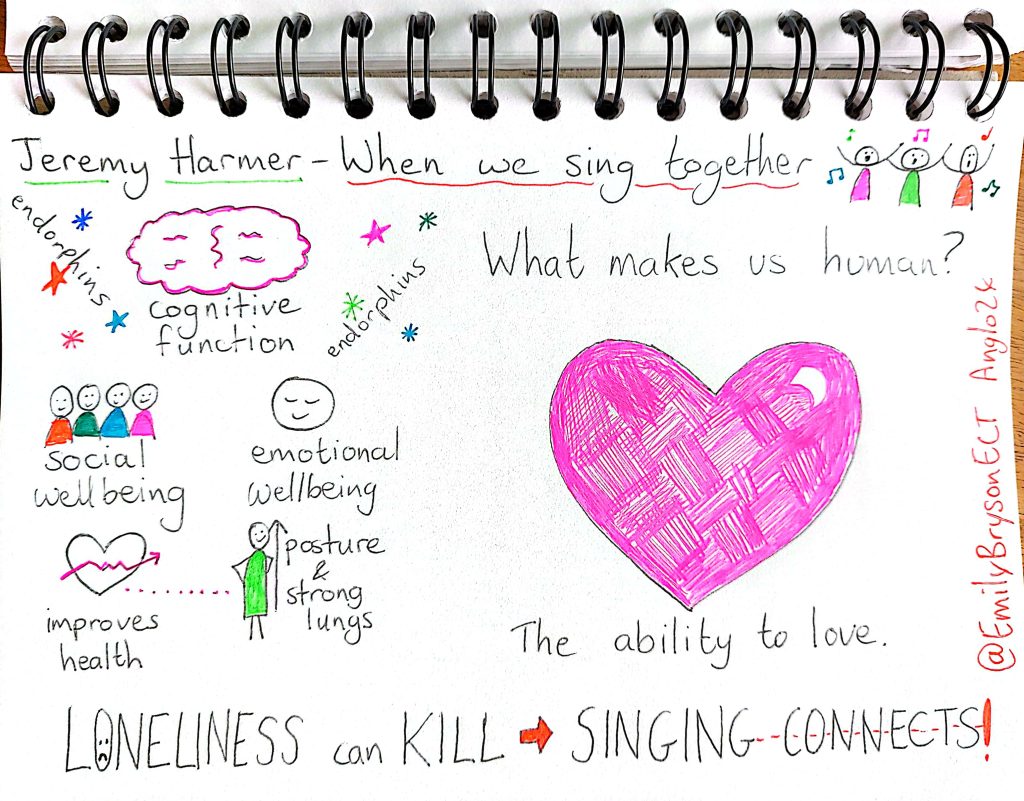
I hope you enjoyed my sketchnotes. You can find a short summary of each talk on my Anglo Congress for blog post for Ellii.
if you’d like more ideas to get started with sketchnoting, check out my FREE GUIDE or sign up to my ONLINE COURSE! It fits perfectly with my Build your Visual Vocabulary module, which is designed to boost your confidence with simple doodles.
If you’d like me to create a sketchnote summary of one of your workshops, webinars or plenaries, just get in touch. I can create digital or analogue notes. You can see examples of my digital sketchnotes here: www.EmilyBrysonELT.com/sketchnoting/
Sketchnotes from Congreso Anglo 2024 Read More »







































